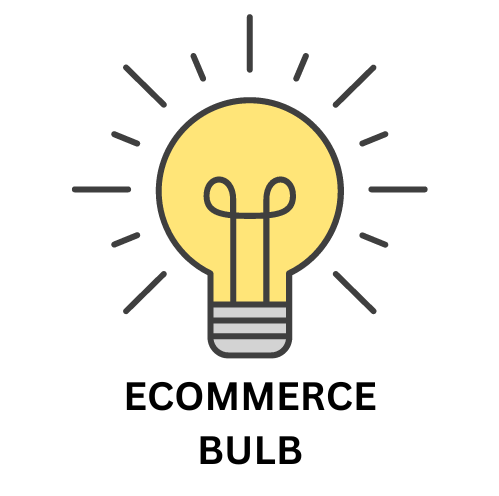Do you have a Shopify Online store and want to integrate it with a Digital Experience Platform (DXP), How to Integrate Optimizely with Shopify is the question we’ll answer in this blog post.
How to integrate Optimizely with Shopify?
Integrating Optimizely with Shopify allows you to run experiments and optimize your Shopify store’s user experience. Here are the general steps to set up Optimizely with Shopify:
1. Set Up an Optimizely Account
- If you don’t already have one, sign up for an Optimizely account (Optimizely Web for front-end experiments is most common for Shopify).
2. Install the Optimizely Snippet on Shopify
- Obtain the Optimizely Snippet:
- Go to the Optimizely dashboard and create a new project for your Shopify store.
- Navigate to the Implementation tab to get the JavaScript snippet for your project.
- Add Snippet to Shopify:
- Log into your Shopify admin panel and go to Online Store > Themes > Edit Code.
- Open the
theme.liquidfile and paste the Optimizely JavaScript snippet in the<head>section of the HTML. This ensures the snippet loads on every page of your Shopify site.
3. Define Experiments
- Once the Optimizely snippet is on your Shopify site, you can start setting up experiments. Go to the Optimizely dashboard, where you can create A/B tests, multivariate tests, or personalization campaigns. Use Optimizely’s visual editor to create experiments on your Shopify storefront.
4. Event Tracking (Optional)
- You can add custom event tracking to measure specific actions (e.g., add-to-cart clicks, product views) by using Shopify’s Scripts API or embedding Optimizely tracking code in specific theme files (e.g., product templates).
5. Run and Monitor Experiments
- Once the experiments are set up, you can run them and track results directly from the Optimizely dashboard. You’ll be able to see metrics like conversions, engagement, and revenue impact.
6. Advanced Features (Optional)
- For more advanced usage, such as server-side experiments, you can use Optimizely Full Stack if you need to integrate with deeper parts of Shopify’s backend, though this requires programming.
Read More:
Additional Considerations:
- GDPR Compliance: Ensure you have proper consent mechanisms in place for user data tracking in line with GDPR if applicable.
- Performance: Test your Shopify store’s performance to ensure the Optimizely script doesn’t significantly affect page load times.
By following these steps, you can successfully integrate Optimizely with Shopify and start experimenting to improve your store’s performance.
For more detailed instructions, consider visiting Optimizely’s official documentation or Shopify’s developer resources.

How do you integrate Optimizely?

Integrating Optimizely into your website or app involves a few key steps:
- Create an Optimizely account: Sign up for an Optimizely account and choose the appropriate plan for your needs.
- Install the Optimizely snippet: Add the Optimizely snippet to your website’s header. This snippet is a small piece of JavaScript code that enables Optimizely to track user behavior and deliver variations.
- Create experiments: Define the goals of your experiments and create different variations of the elements you want to test.
- Target traffic: Decide which users will see each variation. You can target based on various criteria, such as demographics, behavior, or device type.
- Measure results: Track key metrics like clicks, conversions, and time on page to analyze the performance of each variation.
Optimizely also offers integration with other tools and platforms, such as Google Analytics, marketing automation platforms, and content management systems. This allows you to combine data from different sources and get a more comprehensive view of your website’s performance.

How do I Add Integration to Shopify?

Adding integrations to your Shopify store can enhance its functionality and streamline your business operations. Here’s a general guide on how to add an integration to Shopify:
- Access the Shopify App Store:
- Log in to your Shopify admin panel.
- Click on Apps in the left-hand sidebar.
- Click on Shopify App Store.
- Find the App:
- Use the search bar to find the app you want to integrate. For example, if you want to integrate an email marketing tool like Klaviyo, search for “Klaviyo”.
- Browse through the available apps and select the one that fits your needs.
- Install the App:
- Click on the app you want to install.
- Click the Add app button.
- Follow the prompts to install the app. You may need to approve the app’s permissions.
- Configure the Integration:
- Once the app is installed, you’ll need to configure it. This usually involves connecting your Shopify store to the app by entering your store’s URL and API keys.
- Follow the app’s setup instructions to complete the integration.
- Test the Integration:
- After setting up the integration, test it to ensure it’s working correctly. For example, if you’ve integrated an email marketing tool, send a test email to verify the connection.
Here are a few examples of popular integrations and their setup processes:
- Klaviyo: Integrate Klaviyo for email marketing by adding it from the Shopify App Store, entering your Shopify store URL, and configuring sync settings.
- Amazon: Use an app like Amazon Importer to connect your Shopify store with Amazon, allowing you to import products and sync data.
- Custom Forms: Add custom forms to your Shopify store using form builder apps like Jotform or Google Forms.

How to Integrate Shopify API?

Integrating Shopify API: A Step-by-Step Guide
Shopify’s API provides a powerful way to interact with your Shopify store programmatically. This allows you to build custom applications, integrate with other tools, and automate tasks.
1. Obtain API Credentials:
- Create a Shopify app: Log in to your Shopify admin and create a new app.
- Generate API keys: Obtain your API keys and password.
2. Choose a Programming Language:
- Shopify’s API supports various languages, including Ruby, Python, PHP, Node.js, and Java.
3. Install the Shopify API Library:
- Use the appropriate library for your chosen programming language. For example, you can use the Shopify API gem for Ruby or the Shopify Node Library for Node.js.
4. Authenticate with Shopify:
- Use your API keys to authenticate with Shopify and establish a connection.
5. Make API Requests:
- Use the Shopify API library to make HTTP requests to the Shopify API endpoints. Each endpoint corresponds to a specific action or resource.
6. Handle Responses:
- Process the responses from Shopify’s API and use the data to update your application or perform other actions.
Example (using Ruby):
Ruby
require 'shopify_api'
ShopifyAPI::Session.setup(
domain: 'your-shop-name.myshopify.com',
api_key: 'your_api_key',
password: 'your_api_password'
)
# Get a list of products
products = ShopifyAPI::Product.all
# Create a new product
new_product = ShopifyAPI::Product.new(
title: 'New Product',
body_html: 'Product description',
variants: [
{
price: 19.99,
sku: 'SKU123',
inventory_quantity: 10
}
]
)
new_product.save
Additional Tips:
- Rate limits: Be aware of Shopify’s rate limits to avoid exceeding the allowed number of API requests.
- Error handling: Implement error handling to gracefully handle unexpected responses.
- Testing: Thoroughly test your integration to ensure it works as expected.
By following these steps and leveraging Shopify’s API, you can create custom applications and integrations to enhance your online store.




Leave a Reply